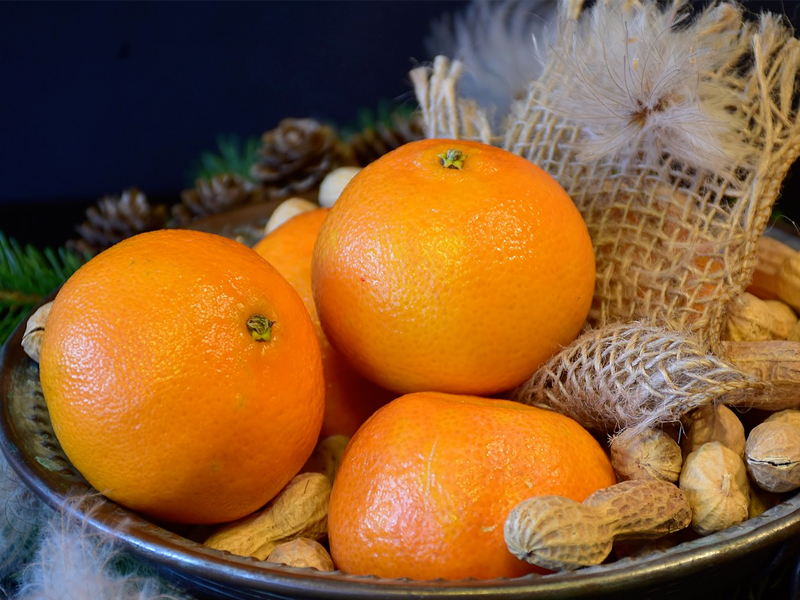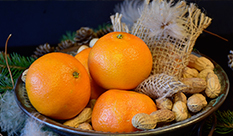你的位置:
首页 >
Industry Information
【Quercetin】Main Citrus Flavonoids with Antidiabetic Effects
【
Quercetin】Main Citrus Flavonoids with Antidiabetic Effects
This citrus flavonoid is probably one of the most studied flavonol compounds, which may be due to its ubiquitous presence in different citrus plants. It also has many therapeutic properties that include anti-inflammatory, antinociceptive, and anticancer effects. Oranges, mandarins, limes, lemons, sour oranges, and grapefruits are common sources of
Quercetin.
Quercetin is, therefore, considered the most important citrus flavonoids because of its ability to modulate the essential inflammatory mediators that accompany metabolic diseases. This flavonol is one of the most popular citrus flavonoids in the global fruit market, and it is commonly used as a constituent in nutraceuticals and food supplements. A number of products containing this flavonoid have been patented because of its outstanding therapeutic applicability as a disease-fighting antioxidant molecule that can improve the health and well-being of individuals.
Dhanya, Arya, Nisha, and Jayamurthy investigated the molecular mechanism of
Quercetin by screening it in skeletal muscle (L6 myotubes) cells and showed that it improved glucose uptake via regulation of the AMPK pathway. The authors demonstrated that the AMPK pathway has a significant role in 2-NBDG (2-deoxy-2-[(7-nitro-2,1,3-benzoxadiazol-4-yl)amino]-D-glucose) uptake and that this was induced by
Quercetin. The adenosine monophosphate/adenosine triphosphate ratio (AMP/ATP) is an essential factor for cellular AMPK activation, and
Quercetin pretreatment caused an increase in both the AMP-to-ATP ratio and the adenosine diphosphate (ADP)-to-ATP ratio, an effect correlated with its activity on mitochondrial membrane depolarization. In addition,
Quercetin pretreatment in L6 myotubes induced a significant up-regulation of the mRNA levels of both AMPK and its downstream target p38 MAPK. Interestingly, calcium-calmodulin mediated protein kinase (CaMKK), AMPK, and MAPK, the key signaling molecules involved in the AMPK signaling pathway, were up-regulated by
Quercetin treatment in vitro, reinforcing the evidence of its participation in this vital signaling pathway related to the management of insulin signaling. In addition,
Quercetin was found to increase GLUT4 expression and translocation in a skeletal muscle cell line. Therefore,
Quercetin possesses antidiabetic potential via activating multiple therapeutic targets to rectify insulin resistance through bypassing different metabolic pathways.
However, Dokumacioglu et al. have reported some controversial results regarding the effect of Quercetin on diabetes. Although Quercetin treatment decreased various diabetes-related biochemical parameters, such as TC, TG, LDL C, VLDL C, and MDA, it did not alter the HDL-C level and the GSH concentration. Histological analysis showed that treatment with Quercetin led to an increase in the regeneration of β-cells in the pancreatic islets. However, it was also reported that Quercetin administration in diabetic animals regulated the levels of pro-inflammatory cytokines, such as TNF-α and IL-6. In addition, Quercetin also blocked the weight loss in diabetic rats, which could be the result of Quercetin regularizing TNF-α and IL-6 secretion in adipose cells and the consequent decrease in fat tissue.

........................................................
如果你想知道更多信息,可以发邮件到:info@benepure.com或打电话给我们:+862886799990.
 上一条:Artificial sweeteners and dental health
下一条:Research indicates that vitamin D3 supplementation can help repair damage to the cardiovascular system
上一条:Artificial sweeteners and dental health
下一条:Research indicates that vitamin D3 supplementation can help repair damage to the cardiovascular system













